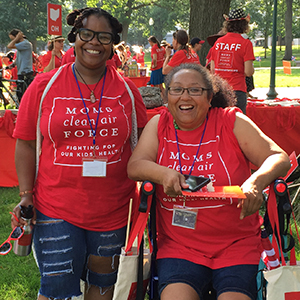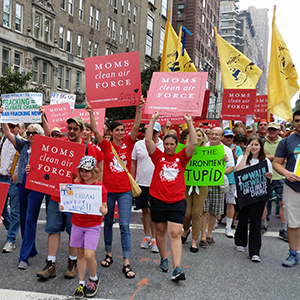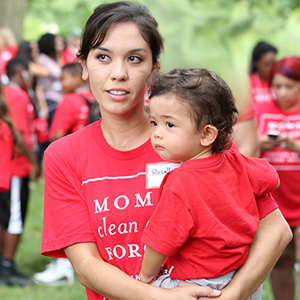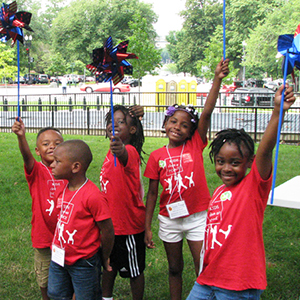
Only a few months ago, the former president declared that a presentation on “Structural Racism and Environmental Justice” was un-American.
As soon as Joe Biden entered the White House, he made it clear in his January 27 Executive Order on “Tackling the Climate Crisis at Home and Abroad” that Environmental Justice would be critical to his agenda. Included is the establishment of an Interagency Working Group to Decrease Risk of Climate Change to Children.
Perhaps now, the door will open more widely to learn from studies that outline how systemic racism has impacted communities of color.
Vivek Shandas and his two co-authors of the “Effect of Housing Policies on Resident Exposure to Intra-Urban Heat” have delivered findings showing how “historical housing policies were directly responsible” for a disproportionate number of health and heat-related consequences in minority communities.
Their research took them back to the 1930s, when the federal government drew up city maps to determine “risk factors” for real estate investment. The grading system’s metric used race and immigrant population as a determining factor. Red lines were drawn around neighborhoods classified as “hazardous,” yielding the term redlining. It left these locations with an absence of services, denials of loans for federal mortgages, and few green spaces.
Comparing digital maps of redlined neighborhoods with maps showing the highest heat levels, the study found a consistent correlation: Few trees and an abundance of asphalt.
These are heat islands—areas composed primarily of paved surfaces, buildings, parking lots, expressways, and industrial tracts. The antidote is large parks, vegetation and trees, and conscious urban planning.
The heat mapping project of Professor Shandas (carried out with the assistance of “citizen scientists”) showed that the temperature differences between underserved communities and nearby affluent white neighborhoods have ranged from 5 degrees to 20 degrees Fahrenheit during the summer.
Across the United States, 600 Americans die from heat exposure annually; 65,000 go to the Emergency Room from heat-induced symptoms.
With increasingly hot summers resulting from the climate crisis, predictions suggest that by 2050 extreme heat conditions will be worse.
Economic ramifications have dovetailed with environmental factors. Dr. Robert Bullard identified this when he stated:
“Today, zip code is still the most potent predictor of an individual’s health and well-being.”
Another report, Association of Air Pollution and Heat Exposure With Preterm Birth, Low Birth Weight, and Stillbirth in the US, showed that pollution from cars and power plants led to ground-level ozone, which caused “placental inflammation that impacted the fetus.” The report also pointed out how “social determinants” played a significant role, underscoring:
“Among racial/ethnic groups, our findings suggest that black mothers are at greater risk for preterm birth and low birth weight. Social determinants of health, including residence in urban areas with higher exposure to air pollutants and long-term high levels of stress, are known to contribute to adverse obstetrical outcomes.”
And this is in utero.
Young Black children have a more difficult time learning at school because of heat factors. They are also five times more likely to be hospitalized with asthma.
I reached out to Professor Shandas to ask what his advice to President Joe Biden would be. He responded:
“The President’s Administration is already advancing environmental justice, and I would urge them to go further by taking swift action on one of the most pernicious and preventable natural disasters that have yet to be considered by FEMA or other federal agencies. Urban heat claims more lives than any other natural disaster and discriminates by killing older adults, lower-income communities, and people of color, most of whom live in historically disinvested neighborhoods.”
Actions would consist of three steps:
- Identify specific streets and neighborhoods where urban heat will disproportionately impact low-income communities and people of color.
- Support mitigation efforts, such as greening of neighborhoods, which is a low-cost and highly effective approach to turn down temperatures during hot summer days.
- Work with states and cities to revise zoning codes so that new developments actively cool neighborhoods, as opposed to amplifying temperatures.
Taken together, these steps would improve the health outcomes of communities that have been burdened by racist planning decisions, which are no fault of their own.
His top takeaway was concise:
“To repair damage created by such pernicious redlining policies and other race-based planning practices, the Biden Administration needs to advance policies that directly support communities of color—specifically African American, Indigenous, and Latina mothers—who face a disproportionate risk from rising temperatures and living in locations where air pollution harms babies yet to be born.”
The 1968 Housing Act banned redlining, but the legacy of its socioeconomic impact on families remains.
TELL PRESIDENT BIDEN: THANK YOU FOR ACTING ON CLIMATE & ENVIRONMENTAL JUSTICE




